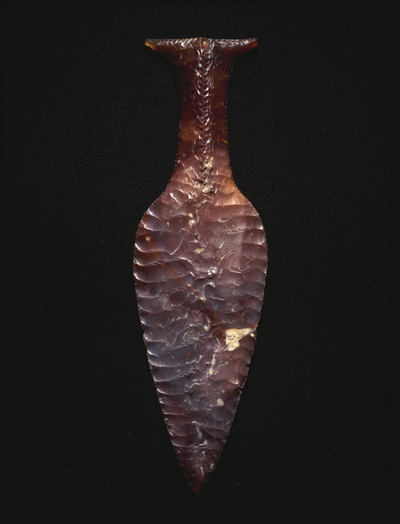The Hindsgavl Dagger
In the Neolithic period the flintworkers achieved very high technical standards. The magnificent dagger from Hindsgavl with its blade less than 1 cm thick is the finest example of the flintworkers’ outstanding skills at the end of the Stone Age. It was found around 1876 on tihe island Fænø in the Little Belt. The dagger type is called a ‘fishtail dagger’ because of the fishtail-formed hilt. Pressure-flaked daggers mark the beginning of the end of the Stone Age, and are the reason why the period from 2400-1800 BC is called the Dagger Period.



